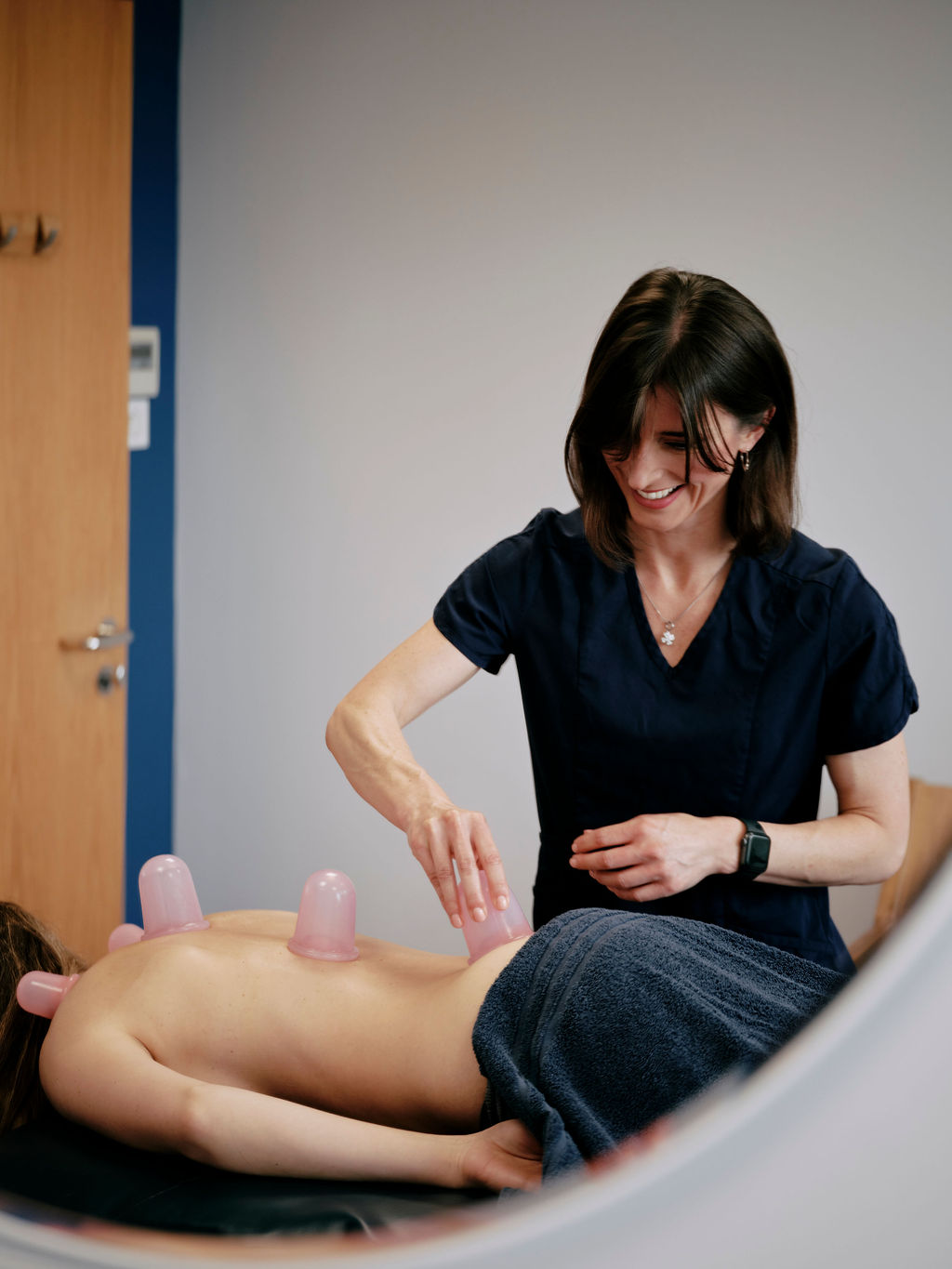Chinese Cupping Massage
Several Olympic athletes have been spotted (literally) with round purple or red marks. These are telltale signs of cupping therapy, a useful recovery regimen for athletes such as swimmers to the USA track and field team. Cupping is an effective therapy and regularly used at the clinic as either a sole treatment or alongside acupuncture and massage techniques to aid soft tissue release and joint mobility.
How does it work?
Cupping involves negative pressure and suction, rather than the tissue compression you have during a massage. It creates a vacuum and lifts the skin up in that space and therefore creates a lift and release of the soft tissue. Utilising advanced bodywork techniques such as myofascial release, lymphatic drainage, acupressure and acupuncture, cupping can instantly release soft tissue; drain excess fluids and toxins, loosen adhesions, lift connective tissue and bring blood flow to stagnant skin and muscles. Using solely the compression of manual massage, these kinds of results are simply not possible.
Does it hurt?
Not at all! The strong vacuum will mimic the rolling action of a deep tissue massage without any discomfort. It is a very relaxing treatment.
Why does it bruise?
Depending on how long you leave the cup on a particular area, you get an infusion of fluid in that region. This is why you may have seen marks on some of the Olympic athletes, as there is an increase in blood flow or qi to the area. Athletes physically demand a lot from their body and so someone with a greater level of soft tissue trauma or a particular injury will have deeper discoloration around that area.
Bruising can be controlled
The strength of the vacuum in the cups can be controlled from light to a much deeper pressure. This helps to limit any discoloration. It is thought to affect tissues up to four inches deep from the external skin. If you are worried about getting any bruising your practitioner will be able to adjust your treatment so that there is minimal to no bruising at all. However the greater the tissue trauma or blockage in the area the more lightly there will be some form of discoloration. Bruising tends to occur only on the site of injury for example the shoulder joint in a rotator cuff injury rather than all over the shoulder. This bruising is known as qi stagnation, the goal with cupping is to unblock this stagnation i.e. loosen the soft tissue.
Different techniques
- Static cupping – A cup is placed over a joint or trigger point and left to slowly release and promote blood flow to the area
- Flash cupping – this is where a few cups are placed one after the other in a sequence over an area and removed quickly. This process is repeated a few times over areas such the back, chest, legs. It is most commonly used for soft tissue release as well as coughs and colds. This feels like a light tugging sensation in the area.
- Sliding cupping – Massage oil is placed over the affected area and once a vacuum is created the cup is slid over the area or channel. This technique is useful as it covers a large area such as the back or legs and feels like a deep tissue massage.
What can it help?
- Sports injuries – many professional athletes incorporate massage cupping into their training to enhance their overall performance, agility and ability to recover from their sport.
- Pain relief and stress reduction – Chinese cupping feels like a relaxing deep tissue massage.
- Coughs and colds – cupping is regularly used for congestion. In fact, respiratory conditions are one of the most common maladies that cupping is used to relieve.

